PRM, short for Partner Relationship Management, is the discipline that involves managing channel partners effectively. It encompasses principles and tactics for overseeing partner relationships in the context of channel marketing, sales, and service. The success of PRM is crucial for an organization's ability to recruit, retain, and collaborate with partners, leading to increased revenue at a lower cost compared to a direct sales and service model.
Best Practices Articles

What Is Partner Relationship Management?
The discipline that embodies the principles and tactics of managing channel partners is called partner relationship management (PRM) or channel relationship management.
At the foundation of channel management, you’ll find partners. Partners fuel channel marketing, sales, and service efforts–their success is directly correlated to the overall channel’s success. While finding ways to manage them efficiently can be challenging, it’s a crucial component that can enable your organization to recruit and retain more partners, as well as, increase revenue at a much lower cost of sales and services than a direct sales and service model.
The Partner Journey
The word journey means it has a roadmap–with a beginning and an end. Regarding partner relationship management, the roadmap is about attaining higher sales velocity and better customer satisfaction at a lower cost of sales and services. The beginning of this journey starts with partner recruitment and it ends with a high-performing channel.
The truth is it never ends, because the channel is a living and breathing entity. It’s always changing. So, yes you start with a roadmap and you execute, but there are constant changes, detours, and optimization that you have to do with the new focus.
A successful and growing organization is always introducing new products, acquiring new partners, realigning their groups and incentives, etc., to achieve a higher level of performance. So, while you don’t want to make changes every ninety days, you certainly don’t want to stick with a stale channel program year after year either.
That’s why the notion of a partner journey revolves around a framework, but it’s highly dynamic–not like a Disney roller coaster ride, but more like a seasoned traveler that ventures through dozens of countries with a pre-determined budget to attain certain specific goals. In this case, those goals are to make more revenue at a lower cost with a higher customer satisfaction rate and very few business risks or (legal) exposures.
With this said, few things are constant. For a channel-focused organization, partners are always going to be a critical component of any business strategy, whether it’s a vendor just starting or an organization that has been established for years. After all, the productivity of the partners determines the success of the channel. This is where a well-tuned partner relationship management (PRM) software or system can truly help an organization realize its channel strategy and business goals.
With this in mind, let’s go through an overall partner journey with a vendor organization–starting with partner recruitment, training, enablement, sales, and ongoing relationship management.
Partner Recruitment
This is the first step in a partner journey–joining a vendor organization or partner recruitment. You can’t expect to scale without adding new channel partners to your organization. There must be an ongoing and proactive effort to build relationships with potential channel partner organizations that can sell and support a vendor’s solution. This includes both outreach and onboarding processes. A well-designed partner relationship management (PRM) platform should allow you to do this well.
Rather than targeting any available partner, outreach efforts should be built around a strategy–one that seeks out channel partners who are likely to perform. But recruiting is only half the battle. Once you’ve signed on the dotted line it’s time to give them all the resources and knowledge they need to begin actively selling as soon as possible.
Partner Training
The goal here is to ensure partners’ functional teams are properly trained on how to market, sell, deploy, and support a specific solution. This means more than just a two-day conference in a hotel.
To properly give new partners the tools they need to sell you need to take a more holistic and ongoing approach. By that, we mean offering online courses, including webinars, courses, tracks, and certifications. For example, ZINFI offers a Learning Management System that can be customized based on the vendor and even offers an incentives tracker to encourage continued training.
Analyzing current partnerships should also be ongoing. By identifying partners that are under-performing, you can determine why and work to improve their productivity. Thomas Reid said it best, “A chain as strong as its weakest link.” And, once you know that you can focus on offering specific training and certification programs to bridge those skill gaps in your channel.
As I said earlier, the channel is continuously evolving, so the training you did a year or two ago, may be outdated. You need a dynamic platform to constantly keep your partners trained and equipped with the latest marketing, sales, and technical aspects of your solutions.
Partner Enablement
The goal of these activities is to provide partners with the right tools and tactics to develop a market, sell to the customer base, and then serve. This includes additional training, from webinars to face-to-face meetings.
Additionally, partners need to look the part–partners of your organization. That’s why in addition to providing online or face-to-face training, you will need to enable them with marketing, sales, planning, and other necessary tools. State-of-the-art software, like ZINFI’s partner relationship management (PRM) platform, allows you to do so.
Through ZINFI’s PRM platform you can provide them with templated forms, letters, and documents that allow them to simply paste their logo in and share those assets with their customers. You should also give access to any collateral–from marketing to legal documentation–that they need to streamline the sales process. The last thing you want, as a vendor, is to be the bottleneck for your partners. So, make all your resources easily accessible, co-brandable, and usable in a partner’s marketing, sales, and technical activities.
Partner Marketing
Once you have enabled your partners with basic marketing, sales, technical, and service aspects of your business, the first big step is to go out and market to generate leads for your products and services. In many cases, if you are just starting a channel, you may just be helping partners to sell to their installed base. However, even in those cases, you will have to provide some basic channel marketing materials to the partner.
ZINFI’s PRM platform can help you put together a set of simple email, social, web syndication, and other type of marketing campaigns that partners can quickly use to launch in minutes. This becomes a necessity when you have a very large channel, as you will have to offer different types of campaigns, e.g., healthcare, manufacturing, SMB, mid-market, enterprise, etc., but at an early-stage simple email template or co-branded asset, tools can go a long way to drive your partner’s marketing efficiencies.
Partner Sales
As a part of your partner journey, the most important destination is to increase sales– and do it at a lower cost. Therefore, the goal here is obvious–go out and generate demand and then close transactions to drive revenue. How to start? As part of the training, a great incentive to begin selling is to provide leads. This is a great opportunity for new partners to apply what they’ve learned and go after a real prospect.
It’s especially important that, as the vendor, you implement processes that enable you to track conversion rates. This is a great way to identify over-achievers or those struggling. If conversion rates are extremely low, for example, it may be indicative of insufficient training or the need for more of it.
PRM tools are a great resource and can serve as an extension of training and engagement. For example, ZINFI’s partner relationship management software enables vendors to customize and personalize portals based on groups and profiles.
So, you can have partners in different regional groups, and then have different profiles–sales, marketing, technical, etc. This way if someone in sales from Germany logs in they can get specific materials on how to sell in Germany whereas somebody in tech logged in from New York City will only see technical training.
This robust, customization of partner enablement and content empowers partners to learn as much as they want about products to help them achieve their goals (and yours).
Managing Partner Relationships
Once partners have been onboarded, trained, and have access to the resources they need, the priority becomes ongoing management. This means consistently engaging with your partners and providing them with everything they need to be successful.
If you are trying to build a large successful channel, your partner journey should consist of groups of different types of partners who are enabled with various targeted programs across multiple industries, e.g., verticals, sizes, and locations of businesses, etc., and functions, e.g., marketing, sales, technical, etc.
A state-of-the-art partner relationship management platform makes this profile management easy, but most importantly will allow you to map your programs to your groups of partners. We will discuss that in detail next.
Partner Programs
For any approach to partner relationship management to work, it is essential to clearly define and plan various types of programs related to partners. It’s helpful to imagine the process you’d take when hiring a new sales associate–you’d first want to introduce them to your product through extensive training, give them the resources they will need to be successful, provide them with leads to start, and (if you’re good) offer incentives for motivation.
Partner programs will look very similar. To be truly effective, these programs should be a continuous feat, one that extends the length of your business together.
While it would be great if all partners learned everything there is to know about your organization and ride off into the sunset selling forever, the reality is–that they need ongoing support from you AND a little incentive as motivation.
This is critical to making your channel program successful. Don’t feed and choke them with a lot of materials. You will need to stairstep them through your partner journey to make sure they learn as they go along, but most importantly they achieve quick success by selling and servicing their customer base. Ease of doing business, but also ease of learning from you are going to be the two most critical drivers for success. This is where a well-designed partner portal using ZINFI’s partner relationship management software can greatly help.
This can happen in the form of different programs built specifically for them.
Partner Policies
This is about clearly defining dos and don'ts. For example, sometimes vendors have products that only certain types of partners—who have certifications and competencies—can sell. Other times, a certain government-issued certification is required to sell. There could also be exclusive and non-exclusive distribution changes that may affect partners.
One of the most commonly used channel policies is around deal registration or referral management. You must have clear policies around who can register a deal or referral and how it will go through an approval process, what part of that is auto-approved, and what part of those would have to go through manual review by your sales team. You also need to determine how the partner will get notified and eventually get paid a commission when they close a deal.
The parameters around these activities require written policies with iterations when needed.
Partner Management Processes
Partner management process steps must be clearly defined so all of a vendor’s cross-functional team members know exactly which forms to fill out, which approvals they need to secure, how to escalate processes for special pricing or incentives, and so on.
For example, if a vendor is trying to clear inventory of a specific product and wants to offer a discount, the marketing team would need to work closely with the channel sales, channel operations, and supply chain management team members to ensure partners are aware they will be marketing through them.
This is a classic cross-functional interlock that you can only manage if you have a dynamic and robust partner relationship management (PRM) platform.
You should always view processes as the backbone of your channel, they should connect all areas and ensure the lines of communication remain open.
People
Programs, processes, and policies don’t work without the right people in place. Various functions like channel marketing, sales, legal, finance, and operations need to be able to work together to drive channel management. That means the right people, the right structure and the right skills are all essential.
Beyond the common credentials to look for in sales, it’s helpful to find partners who are financially dependent on a product’s success as this will be a major driver for them to perform.
Consider an Automation Platform
In this age of business process digitization, automation is key. It allows organizations to turn time-consuming, tedious tasks into a simple clickable effort. For partner relationship management, this is crucial, especially if it is your goal to scale.
If your organization continues its growth, the reality is one person won’t be able to manage partners alone as manual management processes are limited in their capacity. You’ll eventually be forced to hire more employees, and more after that. This can also make communication increasingly difficult. Instead, automate it with software specifically built for channel management– ZINFI.
ZINFI enables you to automate programs, processes, policies, and various workflows for your channel. You can safely store all your organization’s information and provide unlimited resources for partners. Additionally, your organization can customize each partner’s experience based on their specific need, mixing and matching the most important features.
While most channels are still living in the antiquated world of Excel spreadsheets and manual email updates, let ZINFI help automate these efforts. And with 67% of the buyer’s journey moving to digital, it makes sense to implement a tool that can complement the shift and help you to scale effortlessly.
UNLOCK YOUR CHANNEL’S POTENTIAL
Author:
Sugata Sanyal
Frequently Asked Questions
The Partner Journey in PRM refers to the roadmap that outlines the steps and processes involved in achieving higher sales velocity, improved customer satisfaction, and lower costs in channel management. It begins with partner recruitment and extends beyond to maintain a high-performing channel. This journey is dynamic and adaptive, reflecting the ever-changing nature of the channel environment.
PRM platforms play a crucial role in partner management by offering tools and resources to streamline partner relationships. These platforms help with partner recruitment, training, enablement, marketing, sales, and ongoing relationship management. They provide customizable templates, training materials, marketing campaigns, and partner-specific content, ensuring partners have access to the necessary resources for success. Additionally, PRM platforms can automate processes, policies, and workflows, facilitating efficient partner management and scaling efforts.
Best Practices Guidebook
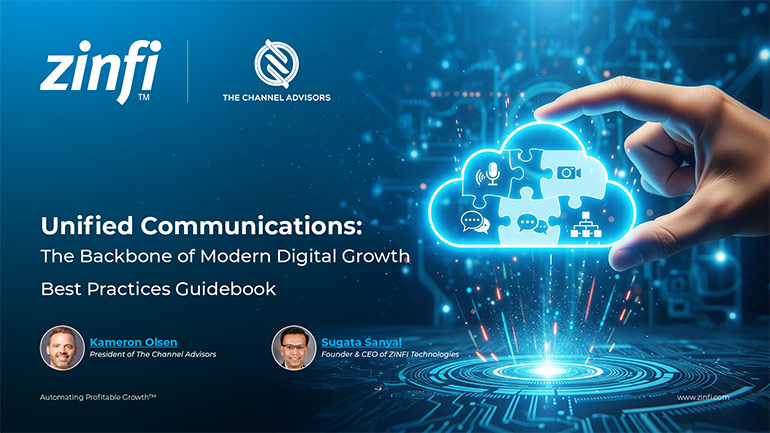 Unified Communications: The Backbone of Modern Digital Growth
Unified Communications: The Backbone of Modern Digital GrowthDownload for FREE
 The Channel Sales Playbook: Skills, Strategy, and Growth
The Channel Sales Playbook: Skills, Strategy, and GrowthDownload for FREE
 Blueprints for Vertical Success Best Practices
Blueprints for Vertical Success Best PracticesDownload for FREE
 The Future of Partner Enablement: From Enablement Gaps to Global Advantage
The Future of Partner Enablement: From Enablement Gaps to Global AdvantageDownload for FREE
 Reimagine Sales Development. Build a Smarter Prospecting Engine
Reimagine Sales Development. Build a Smarter Prospecting EngineDownload for FREE
 The Zero Trust Imperative: Fortifying Enterprise Security Against AI-Driven Threats
The Zero Trust Imperative: Fortifying Enterprise Security Against AI-Driven ThreatsDownload for FREE
 PartnerOps Excellence: The Definitive Guide to Scalable SaaS Ecosystems
PartnerOps Excellence: The Definitive Guide to Scalable SaaS EcosystemsDownload for FREE
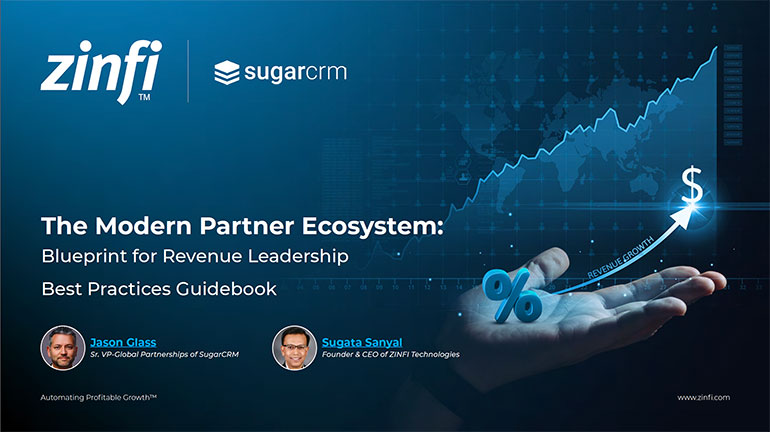 The Modern Partner Ecosystem Best Practices
The Modern Partner Ecosystem Best PracticesDownload for FREE
 Partner Marketing Reimagined: Strategies for Agile, Insight-Led Growth
Partner Marketing Reimagined: Strategies for Agile, Insight-Led GrowthDownload for FREE
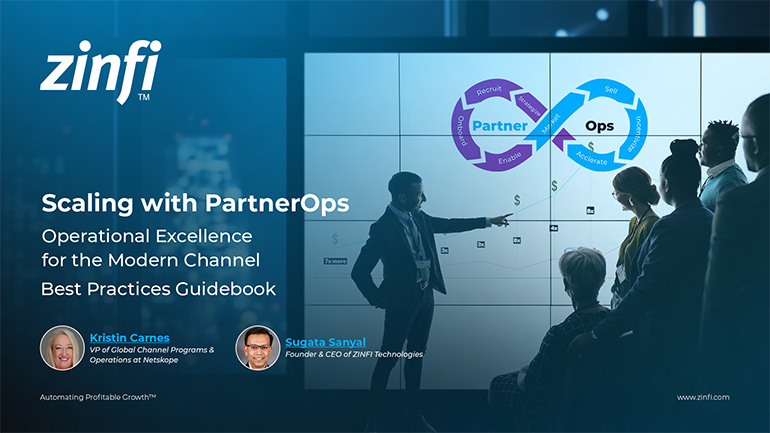 Scaling with PartnerOps Best Pratices
Scaling with PartnerOps Best PraticesDownload for FREE
 Leading with Partner Programs Best Pratices
Leading with Partner Programs Best PraticesDownload for FREE
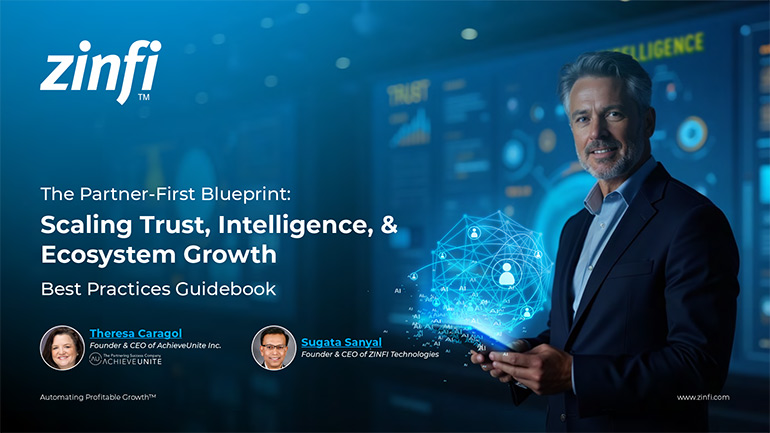 The Partner-First Blueprint: Scaling Trust, Intelligence, and Ecosystem Growth
The Partner-First Blueprint: Scaling Trust, Intelligence, and Ecosystem GrowthDownload for FREE
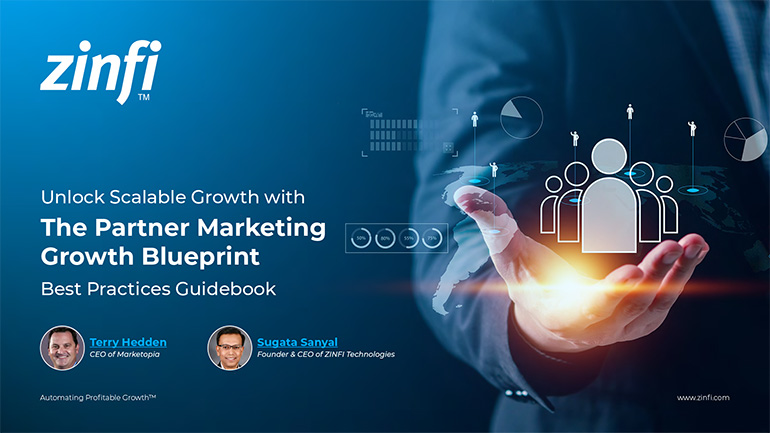 Unlock Scalable Growth with The Partner Marketing Growth Blueprint
Unlock Scalable Growth with The Partner Marketing Growth BlueprintDownload for FREE
 From TikTok to LinkedIn: Social Selling Across the Generational Divide
From TikTok to LinkedIn: Social Selling Across the Generational DivideDownload for FREE
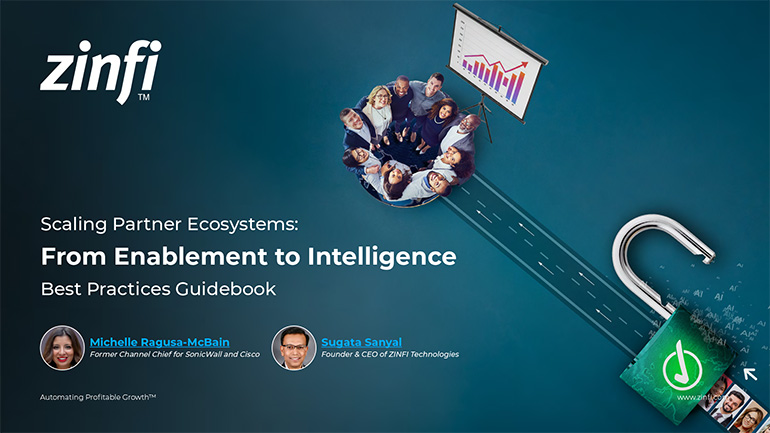 Scaling Partner Ecosystems: From Enablement to Intelligence
Scaling Partner Ecosystems: From Enablement to IntelligenceDownload for FREE
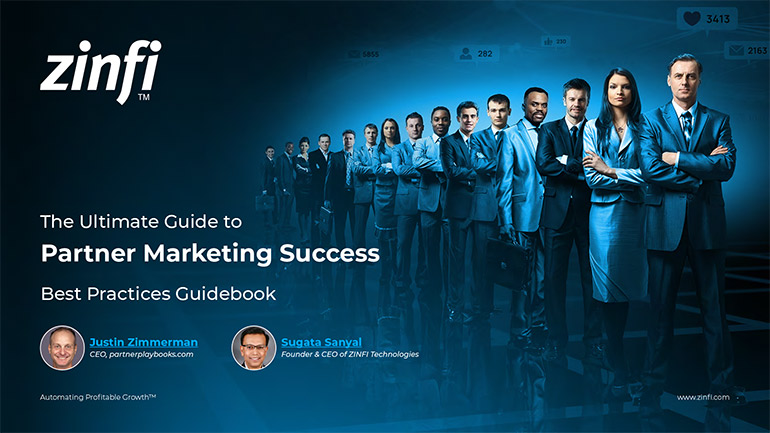 The Ultimate Guide to Partner Marketing Success Best Practices
The Ultimate Guide to Partner Marketing Success Best PracticesDownload for FREE
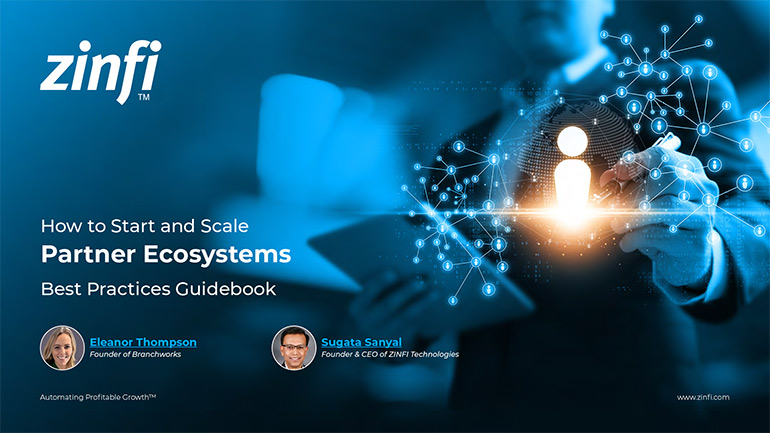 How to Start and Scale Partner Ecosystems Best Practices
How to Start and Scale Partner Ecosystems Best PracticesDownload for FREE







